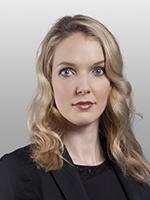The UK Medicines and Healthcare Products Regulatory Agency (MHRA) has published guidance on software as a medical device, including apps. The guidance aims to assist those working in healthcare, and software developers, to determine whether a specific piece of stand-alone software or an app constitutes a medical device. The MHRA provides illustrative examples of software, specifically apps, that are considered to be medical devices, a summary of the current regulatory device regime, in particular its application to systems, and advice on how to comply with the necessary regulatory requirements.
The guidance defines stand-alone software (also known as software as a medical device) as “software which has a medical purpose which at the time of it being placed onto the market is not incorporated into a medical device.” The definition is similar to that agreed recently by the International Medical Device Regulators Forum. The MHRA makes clear that software, including apps, that have a medical purpose and meet the definition of medical device in the Medical Devices Directive will be regulated by the MHRA as devices and will have to undergo a conformity assessment.
Software Applications
The guidance states that decision support or decision making apps are most likely to be considered as medical devices by the MHRA. That is, apps that apply some form of automated reasoning, such as a simple calculation, a decision support algorithm or a more complex series of calculations e.g., dose calculations, symptom tracking, clinicians guide. This includes software which provides personalised guidance based on information the app has about a specific individual and makes use of data entered by them, provided by point of care devices or obtained via health records.
The MHRA clarifies that a key determination in assessing whether an app is a medical device is if a healthcare professional is likely to rely on the output of the app and not review the raw/source data. If an app only provides information to assist a healthcare professional make a clinical decision based on their own knowledge the software may not be considered a medical device.
Systems
Software used to interpret or interpolate patient data stored on a server via a remote point of care patient monitor is likely to be a medical device.
Individual medical devices must be CE marked, but the MHRA does not require each component of a system, such as a telehealth system, to be CE marked as a medical device unless they are placed on the market as a single product. For example, items such as the hub and possibly the remote monitor (depending on the claims of the manufacturer) do not have a medical purpose and therefore may not be CE marked. However, the Medical Devices Directive requires the whole system to be safe. This is particularly pertinent to stand alone software, where the manufacturer must demonstrate compatibility with the recommended hardware platforms. In cases where the system incorporates components which do not bear a CE marking or where the chosen combination of components is not compatible in view of their manufacturer’s original intended use, the system will be treated as a device in its own right.



 />i
/>i

